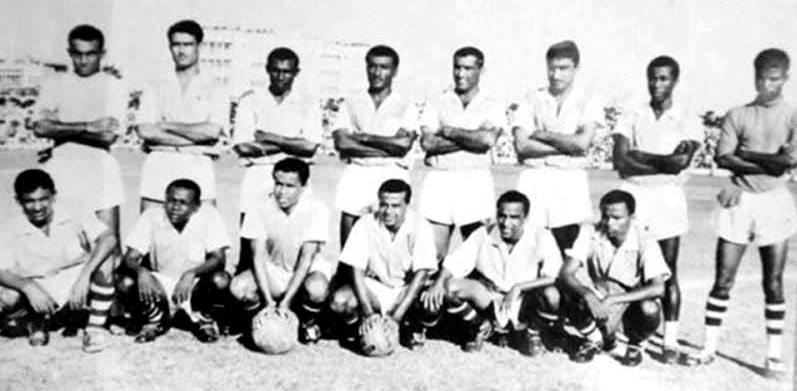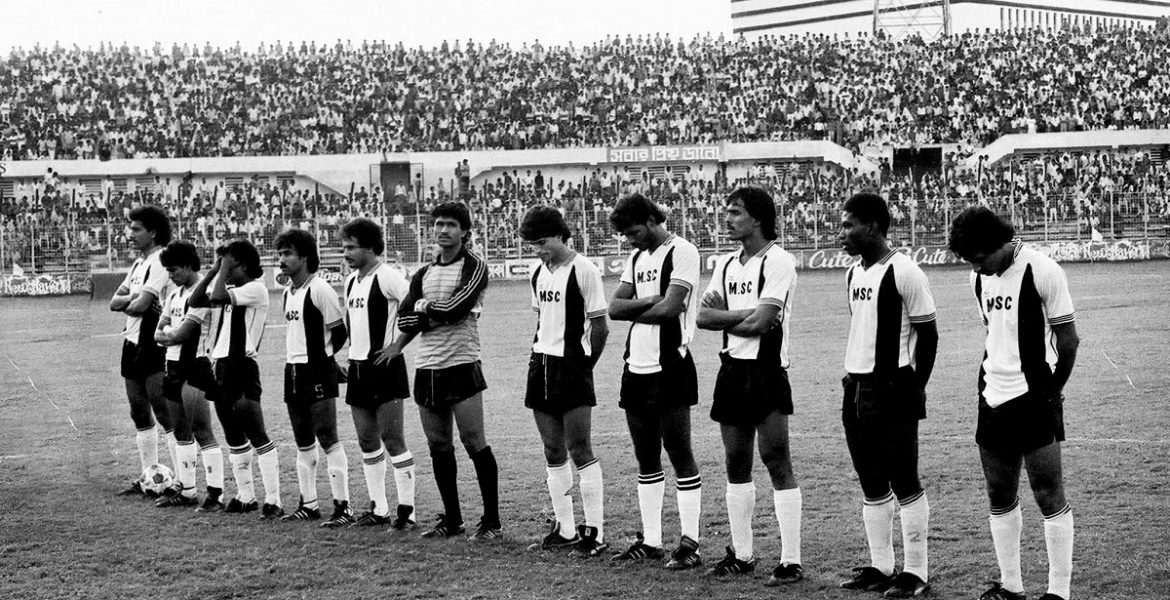Wherever the British went, they took a few things like gymkhana, race course, tea parties, cricket and football with them. Obviously, they brought their national sport cricket with them to India, way back in 1792, and also established the first cricket club: Calcutta Cricket Club. Although, there has been instances of cricket matches taking place as early as in 1780. It is stated in Banglapedia that the British introduced football almost after 30 years in 1821, though the information is unverified. Official sources say the first football match was arranged in Bombay in 1802, but it was a 30-minute affair. However, organised football blossomed in Kolkata and Bengalis took it by their heart as their own, in a fashion the British may have never imagined. The first ‘proper’ football match in Kolkata was held in 1854.
Habits from History
For a long period of time, football was predominantly played by the British but the Bengalis began to slowly embrace the game. This was evident as they began setting up football clubs from the 1880s, most of which were Kolkata based. The first official football club in Bengal was Trades Club (established in 1878), which later became Dalhousie Athletic Club. Calcutta Football Club was formed in 1872 (but they played rugby football at first) and merged with the Calcutta Cricket Club. The first Bengali football club was the Wellington Club which was established in 1884. The famous Mohun Bagan Club, was founded in 1889 and is still going strong today. But before them, there were the likes of Sovabazar Club, Town Club, National Association, Kumartuli, Aryan Club etc, most of which were either established or inspired by Nagendra Prasad Sarbadhikari, who is often referred to as the father of not only Bengal but Indian football. The oldest club in Dhaka was the Wari Club, which was established by Roy Bahadur Surendranath Roy in 1898.
During the 1890s, football began to lay its foundations, mostly by arranging and organising tournaments in Kolkata or its vicinity (eg Durand Cup, Gladstone Cup, Rovers Cup, Cooch Behar Cup, IFA Shield etc). The Bengalis started to make their presence felt, not only by just participating in the cup competitions hosted by the British, but by also winning them. Sovabazar club, one of the many clubs founded by Nagendra Prasad Sarbadhikari was the first to win Trades Cup (which was introduced in 1889) back in 1892 by defeating East Surrey Regiment 2-1. Also in 1893, Fort William Arsenal, which was a team made from Indian workers won the Cooch Behar Cup. National Association became the first Indian club to lift a trophy (Trades Cup) in 1900.
Mohun Bagan won the Cooch Behar Cup in 1904 and the Gladstone Cup in 1905, and started to become the powerhouse of Bengal football, as they are now. But the biggest achievement for Bengal football came in 1911, when the Mohun Bagan Club won the IFA Shield by beating the East Yorkshire Regiment with a 2-1 score line. It changed the scenario of football completely in the age of budding Indian nationalism. The beautiful game escalated from a mere sport to a matter of pride and bragging rights for Bengalis. To some extent, it also became a tool for propaganda. Football clubs and culture started to spawn all over Bengal.


Setting the Pitch: The Context of Desh
As per records from internet, colonial Dhaka, a ‘mufassal’ did not have a proper league structure or tournament before 1948. But from various sources and newspaper reports, it can be confirmed that a Dhaka football league was regularly organised by the sports body of the town from the 1910s (probably from 1915). Moreover, it did have a few pretty well-known local clubs. There used to be big open fields and playgrounds crossing Nawabpur, on the other side of the then railway crossing and Fulbaria Railway station. Clubs, schools and colleges alike didn’t have any fields used to play there. But Wari Club, East Pakistan Gymkhana, Victoria Club, Mohammedan Club, Azad Sporting, Dhaka Wanderers had their own fields. Football matches were sparse (except the league), and were mostly organised by the British army, Dhaka’s nawab family or the zamindars.
As mentioned earlier, Wari Club was the first in Dhaka to come into being in 1898. It defeated the Royal Palace Football team made up of British players in 1910 and Football League Champion Lincoln Club in 1917. They also started to take part in IFA shield from East Bengal. Another significant event for Dhaka was a match between the famous Islington Corinthians Football Club and Dhaka XI, which happened about 20 years later in 1937. The tour of India of Islington Corinthians Football Club was extremely successful. They won majority of their matches, only losing to Dhaka XI, when famous Pakhi Sen scored the winning goal. These wins became part of folklore and popularised the game even more in East Bengal, but centre and stronghold for football remained in Kolkata.
During this period, five Zamindars of East Bengal established the Victoria Club in 1903. It was founded as a football club, but started to participate in other sports from the 1930s. It was the champion of 1st Division Football League in 1948, 1960, 1962 and 1963 and Runners up in 1961. Dhaka Wanderers Club was established in 1937 by the Nawab family members and was very successful in the early period of the Dhaka League (1940s). From 1948, to 1957, it became champions of the Dhaka League six times out of 10 seasons. It is still the third most successful team in the league with seven titles in total.
One of the most iconic clubs of the current generation also originated from that era. Following the footsteps of Calcutta Mohammedan Club (1891), Dhaka’s Nawab Ahsanullah established Mohammedan Union Sporting Club in Dhaka in 1899. A few decades later in 1933, the ‘Muslim Sporting Club’ from Hazaribag (established in 1927) merged with the Dhaka Mohammedan Club. Interestingly enough, Mohammedan Club was not as prominent back then as it is nowadays. It had to wait till 1957 to become the champion of the Dhaka 1st division league. From then onwards, it established itself as one of the true powerhouses of Bangladesh football.

The Cheer Volume
After the creation of Pakistan in 1947, a flurry of football clubs were set up alongside the existing ones, the football craze had officially taken over Dhaka. Azad Sporting Club was established in 1949 and started to play in the 2nd Division. Renowned artist Kamrul Hasan chose the colour and designed their kit. They got promoted into Division 1 within 2 years in 1951 and eventually became the champions of 1958. Also, Azad Boys Club (1950), Brothers Union Club (1949), Rahmatganj Young Muslim Society Club (1950s), Arambag Sporting Club (1958), and Farashganj Sporting Club (1959) came into being during the Pakistan period.
Dhaka Sports Association (DSA) took charge of the sports in Dhaka, and initially built wooden galleries and boundaries with tin in the then ‘Paltan Maidan’. When the Pakistan Olympic Games took place in 1955, the Dhaka stadium was renovated, which saw the wooden galleries being replaced by concrete. Although the stadium was made for cricket with provisions for athletics, it has always been used for football. The renovation and management also paved the way to organising the famous international Quadrangular Cup (also known as Colombo Cup) in 1955 in Dhaka. Pakistan, Sri Lanka and Burma took part, and a strong Indian team, who would take fourth place in the Olympics a year later, won the tournament.


